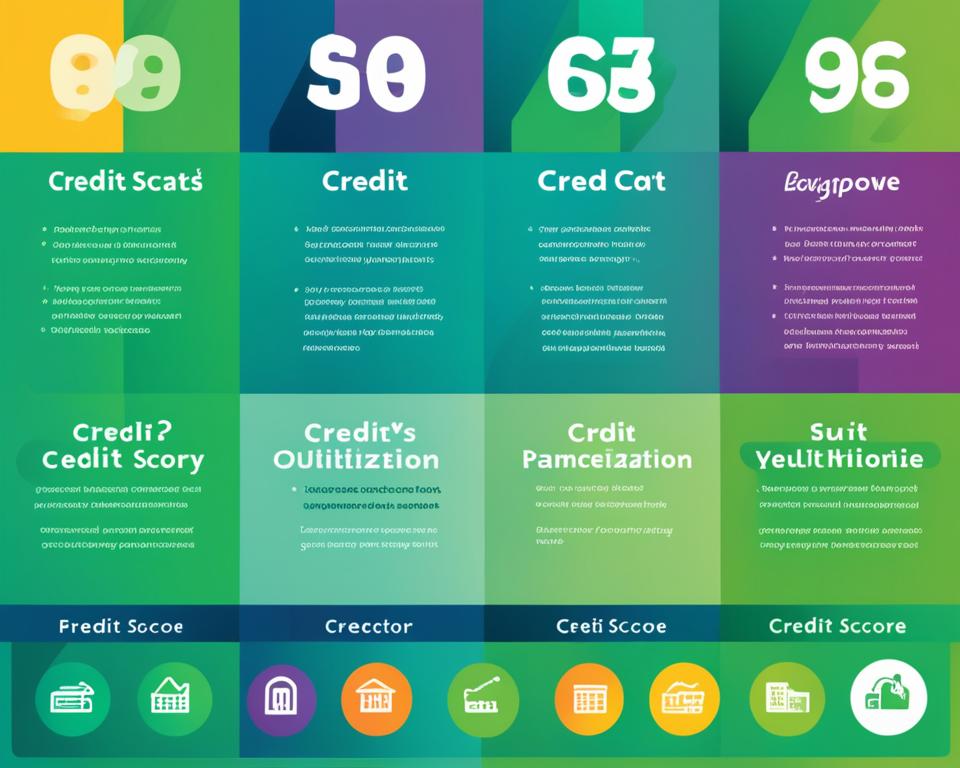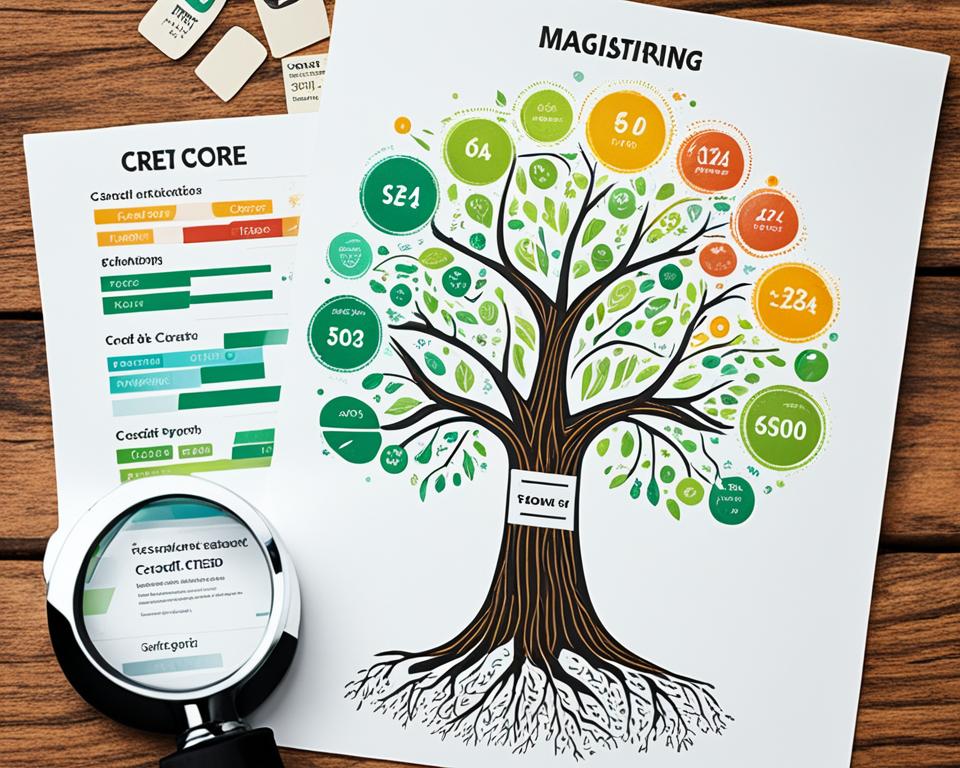The conundrum of credit scores often puzzles many consumers, yet these three-digit numbers carry immense power in the world of finance. They are not merely abstract figures but a reflection of one’s credit history and financial reliability. As gatekeepers to loan accessibility and favorable credit circumstances, these scores are calculated by major credit bureaus—Experian, TransUnion, and Equifax—and range from 300 to 850, providing insight into one’s creditworthiness. Comprehending your credit score involves more than a cursory glance at a number; it requires delving into the comprehensive reporting found within your credit report, which is now readily accessible through services like AnnualCreditReport.com on a weekly basis at no cost.
To check your credit score is to better understand your credit rating, laying the groundwork to strategically improve your credit score. A higher score not only nods to a solid credit history but also unlocks doors to financial opportunities. The task before today’s savvy consumer is straightforward: seek knowledge on how these scores are calculated and take concrete steps towards nurturing your creditworthiness.
Key Takeaways
- Credit scores are numerical representations of your financial trustworthiness.
- Accessing your credit report is free and essential to understanding your credit status.
- Your credit score can significantly influence your loan terms and interest rates.
- Improving your credit score is a dynamic process that benefits from regular attention.
- Regular monitoring helps in maintaining a good credit score and financial health.
The Essence of Credit Scores
Understanding your credit score is essential to maintaining your financial health and can be the deciding factor in loan approval, favorable interest rates, and the terms of your credit accounts. In essence, your credit score signifies how trustworthy you are when it comes to repaying borrowed funds. As a numerical depiction of your creditworthiness, scores in the United States range from 300 to 850—a higher score typically reflecting a more favorable credit history and greater approval odds for financial products.
Defining Credit Scores and Their Importance
A credit score is not just a number—it’s an evaluation of your ability to manage and repay your debts. These scores are meticulously calculated by looking at various aspects of your financial activity, such as payment history on credit accounts, the total amount of outstanding debt, and the length of your credit history. Lenders scrutinize these scores to assess the risk of loaning money to an individual; thus, a healthier score can facilitate access to credit and potentially reduce costs through lower interest rates.
One practical step for anyone who wants to keep a close watch on their financial status is to regularly review their credit report, which is available free of charge through services like AnnualCreditReport.com. This proactive approach can provide opportunities to address inaccuracies or personal financial habits that may be affecting a score negatively, ensuring that one’s credit score remains an accurate reflection of their financial discipline.
Differences Between Various Credit Scores
While the FICO Score is the model most commonly used by lenders to make credit decisions, VantageScore is often employed by credit monitoring services to provide consumers with a clear understanding of their credit standing. The requirements to generate a score, the range of scores, and the criteria considered by FICO and VantageScore can differ—particularly in how they weight the importance of credit history variables and credit activity.
FICO Score, used by a vast majority of top lenders, necessitates a credit account to be at least six months old with activity on the account within the last six months while the VantageScore model can produce a score with relatively newer credit lines. Moreover, FICO has specialized versions designed for specific types of lending, such as auto loans or credit cards, which can range from 250 to 900. Understanding these nuances is pivotal in managing one’s creditworthiness evaluation effectively.
In the pursuit of financial stability and resilience, one’s awareness and education on credit scores can make a significant impact. With a comprehensive grasp of credit score intricacies, individuals can wield greater control over their financial futures.
Credit Scores and Your Financial Opportunities
Your credit score serves as a gateway to an array of financial products and opportunities, significantly influencing your ability to navigate the complex landscape of loan qualification, interest rates, and low insurance rates. As a quantitative measure of your creditworthiness, it effectively dictates the terms and accessibility of credit cards and loans that are essential for both personal and professional growth.
A credit score exceeding the threshold of 750 often ushers individuals into a realm of prime financial products, characterized by competitive interest rates and incentives such as 0% introductory rates on credit cards and 0% financing options for automobile purchases. This elite status is not merely a marker of fiscal responsibility but opens doors to premium offerings that can lead to substantial financial savings and stability.
To illustrate, let’s consider the tangible benefits that stem from holding an exemplary credit score:
- A higher probability of loan qualification, facilitating both the urgent and planned financial ventures.
- Eligibility for financial products designed for consumers with superior credit history, offering more desirable borrowing conditions.
- Potential for low insurance rates that reduce monthly expenses and contribute to long-term savings.
- Access to interest rates that are more favorable, mitigating the cost of borrowing and allowing for more strategic financial planning.
- An invitation to apply for credit cards with advantageous terms, including reduced or no fees, rewards programs, and better cashback options.
Sustaining a high credit score is pivotal, as it serves as a barometer for lenders and financial institutions assessing your fiscal discipline and reliability. It’s a key factor not just in securing financial aid but in crafting a more resilient economic foundation for future endeavors.
As you journey through your financial path, understanding and harnessing the power of your credit score can catalyze unprecedented opportunities, marrying financial insight with tangible rewards.
Why There Isn’t Just One Credit Score
Amidst the complexities of financial metrics, credit scores are particularly dynamic, reflective of the diverse methodologies adopted by credit scoring models. As individuals navigate through the financial landscapes, they may notice varying credit scores across different platforms. Understanding this variability is key to leveraging such metrics for enhanced financial decisions.
Understanding the Variety of Credit Scores
In the architecture of credit scores calculation, two titans stand out: FICO Score and VantageScore. Each presents a nuanced approach, taking into account industry practices and consumer behavior to create predictive models. Over time, even as these credit scoring models undergo regular credit score updates, a spectrum of variations has emerged. These modifications echo the shifts in consumer habits and the evolving tapestry of credit-related industry practices, tailoring scores to present an accurate portrayal of creditworthiness.
The Impact of Different Credit Reporting Agencies
Divergences in credit scores are partly attributed to the methods employed by different credit reporting agencies. Experian, TransUnion, and Equifax each apply distinctive analytical filters, drawing from the same informational pool yet yielding subtle differences in results. This discrepancy emanates from the fact that not all financial information is uniformly reported to every credit bureau, leading to slight variations in the calculation of an individual’s FICO Score or VantageScore. Additionally, specialized credit scoring models exist for particular sectors, like auto loans and credit cards, further expanding the diversity of available scores.
| Scoring Model | Data Considered | Score Range | Model Specifics |
|---|---|---|---|
| FICO Score | Payment history, amounts owed, new credit, credit mix, length of credit history | 300 – 850 (250 – 900 for some products) | Multiple versions for each credit bureau, includes industry-specific scores |
| VantageScore | Payment history, age and type of credit, percent of credit limit used, total balances/debt, recent credit behavior and inquiries | 300 – 850 | Single model usable across all three credit bureaus |
To distill the essence of credit scores, one must look beyond simple numerical values and delve into the intricate web of calculations and industry adaptations that shape these essential indicators of financial health. It’s with this understanding that one can adeptly navigate the realm of credit and harness its power for future fiscal endeavors.
Navigating Through Your Credit Report
A Credit Report Summary is the cornerstone of financial transparency and a pivotal tool in assessing one’s financial credibility. This document encompasses Financial Information that is crucial for lenders, creditors, and even certain employers. By analyzing your report, gleaned primarily from the records on Annual Credit Report, you can understand your financial activities and tendencies spun over the years, including the management of Loans and the daunting whispers of Bankruptcy, if applicable.
Regularly reviewing the details on your credit report is not a mere suggestion, it’s a necessity. Such diligence can lead to the identification and rectification of any errors or inaccuracies that may be blemishing your financial reputation. It mirrors every line of credit tied to your name, be it from a department store or a major bank, alongside the consistency of payments, and the daunting depth of incurred debts.
- The report highlights every credit card and loan under your name—the lifelines and traps of credit.
- It explicitly states your payment history, illustrating your reliability in meeting financial obligations.
- The report spells out the balances owed, giving a snapshot of how you wade through the deep waters of debt.
- And significantly, it flags up any records of bankruptcies, a scarlet letter for creditworthiness.

Deconstructing your credit report, you find chapters of your financial story that speak in hard numbers and facts. It is a tool for reflection, a ledger that doesn’t forget. Companies looking to gauge your risk as a borrower scrutinize this diligently. It’s a precautionary measure to ensure you’re not overburdened with debt, a glimpse into how well you’ve nurtured or battered your credit.
Taking control of your financial narrative starts with understanding this compiled dossier. Trace every credit card, inspect each loan, examine each entry, and verify its legitimacy. When errors are spotted, they ought to be challenged, for a simple clerical error should not be the villain in your credit tale. Accessibility to this information has been democratized, allowing everyone to get their hands on their Annual Credit Report without the burden of cost.
To navigate through your credit report is to navigate through your financial past and present; it is to take the helm of your fiscal journey, armed with knowledge and foresight, to steer towards a prosperous credit destination.
FICO Score vs. VantageScore
When evaluating creditworthiness, both FICO Score Calculation and VantageScore Credit Scoring emerge as predictive indicators critical for lenders’ decisions. These scoring models are developed by the major credit bureaus and used in assessing which credit accounts consumers can handle. Each has unique scoring requirements and uses different algorithms to provide a measure of credit risk, which can significantly influence lending outcomes.
Breaking Down FICO Score Requirements
FICO Scores, which play a significant role in creditworthiness evaluation, require that an individual has at least one credit account that is six months old. Additionally, the account must have had activity within the last six months. The FICO Score is often the go-to metric for lenders, acting as a major factor in credit lending decisions. Specialized versions of FICO Scores exist, which cater to specific credit industries like auto loans and credit cards, and these variations can range from 250 to 900, reflecting the nuanced needs of different lenders.
VantageScore Model and Its Unique Features
The VantageScore model stands out due to its adaptability across all three credit bureau reports. Unlike the FICO Score, VantageScore can generate a credit score for an individual as long as they possess at least one active credit account, with no time constraints applied. This inclusivity has made VantageScore a favored model among credit monitoring services. Moreover, it weighs key credit factors differently from FICO, which can lead to scoring model differences when credit bureaus assess one’s financial habits.
Despite these differences, both scoring models are instrumental in a lender’s arsenal, as they offer distinctive predictive indicators about a borrower’s potential financial behavior. By understanding these scoring models, consumers can take a data-driven approach to improve their chances of approval for loans or credit cards, and ultimately, their overall financial narrative.
Components That Influence Your Credit Score
Understanding the various components that shape your credit score is fundamental for effective credit management and financial stability. Let’s delve into the most significant factors that determine your creditworthiness, directly impacting your ability to secure loans, credit cards, and favorable interest rates.
How Payment History and Credit Utilization Shape Your Score
Your Payment History is the cornerstone of your credit score, revealing how consistently you’ve met your debt obligations. This critical factor accounts for a significant 35% of your FICO® Score. Late payments, defaults, and bankruptcies can severely damage this aspect of your score, emphasizing the importance of timely bill payments.
Equally imperative is your Credit Utilization Ratio, contributing to 30% of your score. It measures how much of your available credit you’re using – high utilization can signal to lenders that you’re overextending yourself and may be a higher risk. Managing this ratio effectively, by keeping it under 30%, will support healthy Debt Management practices.
The Role of Credit History Length, New Credit, and Credit Mix
The age of your credit history, known as Credit Length, reflects the time you’ve been using credit and impacts 15% of your FICO® Score. A longer credit history can provide a more accurate picture of your financial habits over time.
Opening New Credit Applications can affect 10% of your score as they often lead to Hard Inquiries; each inquiry can slightly lower your score. Thus, it’s wise to limit the frequency of new applications. The final 10% is influenced by your Credit File Diversity – having various types of credit, like revolving accounts and installment loans, shows you can handle diverse debt responsibly.
| Credit Score Component | Percentage of FICO® Score | Impact on Creditworthiness |
|---|---|---|
| Payment History | 35% | Reflects ability to make on-time payments |
| Credit Utilization Ratio | 30% | Shows level of debt relative to credit limits |
| Credit Length | 15% | Indicates experience with credit management |
| New Credit Applications | 10% | Provides insight on recent credit pursuits |
| Credit File Diversity | 10% | Demonstrates management of various debt types |
Maintaining a balance between these elements is key to a robust credit score. Keeping your Account Balances low, being cautious with new lines of credit, and ensuring a mix of credit products are part of this intricate dance of Credit Management. By focusing on these components, you’re taking steps to safeguard and potentially enhance your credit standing, opening doors to financial opportunities with better terms.

Deciphering a Good Credit Score
In the world of personal finance, your credit score is a key that can unlock numerous opportunities. Understanding the nuances behind what constitutes a good credit score can be the difference in acquiring favorable loan terms, or being denied credit altogether. It is imperative to familiarize oneself with the FICO Score Ranges as these are the benchmarks utilized by many lenders to evaluate credit risk and determine borrowing eligibility.
What FICO Considers a Good Credit Score
According to FICO, the pioneer in credit scoring, a good credit score is one that falls at 670 or above. This range is considered the baseline for “prime” credit, meaning it’s the score at which most lenders will consider a credit applicant as having a favorable risk profile. The stratifications of FICO’s credit quality above this baseline are delineated as follows:
- Exceptional Credit: 800 to 850
- Very Good Credit: 740 to 799
- Good Credit: 670 to 739
- Fair Credit: 580 to 669
- Poor Credit: 300 to 579
Understanding Credit Score Ranges and Their Meanings
The categorization of credit scores into ranges provides both lenders and consumers a simple way to assess credit risk evaluation. While FICO is the predominant model, the VantageScore also provides tiered categorizations. Here’s how they view the landscape:
| Credit Score Tier | FICO Score Range | VantageScore Range |
|---|---|---|
| Exceptional or Superprime | 800–850 | 781–850 |
| Very Good or Prime | 740–799 | 661–780 |
| Good or Near Prime | 670–739 | 601–660 |
| Fair | 580–669 | N/A |
| Poor or Subprime | 300–579 | 300–600 |
These score ranges illustrate not only the probability of loan approval but also impact the interest rates and terms that a consumer might receive. Individuals with scores falling in the Exceptional or Superprime category can often secure the most advantageous rates and loan terms, reflecting their lower risk of credit default. Conversely, those in the Subprime category might experience higher interest rates and stricter lending conditions due to the perceived higher risk they present to lenders.
Regardless of where you currently stand, understanding the critical role credit scores play in financial planning is the first step in improving your credit score and moving towards a healthier credit status.
Actions to Enhance Your Credit Score
Improving your credit score is akin to embarking on a journey of financial refinement. Staying current with your financial steps can be transformative; diligently making timely bill payments can greatly enhance your score. Adding services like Experian Boost® into your financial toolkit can allow for the inclusion of utility and telecom bill payments within your credit history, potentially raising your score upon successful reporting. Here are additional actions you can take:
- Review your credit report consistently to identify areas in need of improvement.
- Ensure that every bill, be it a utility bill or credit card payment, is paid on time.
- Reduce your credit utilization by paying down existing debt, thus showcasing responsible credit management.
- Request a credit line increase on your current accounts to improve your credit utilization ratio.
- Dispute any inaccuracies found in your credit report to maintain its integrity.
Consider this guiding table outlining steps to upgrade your credit status with tenacity and foresight:
| Action | Benefit | How It Helps Improve Credit Score |
|---|---|---|
| Maintain Timely Bill Payments | Builds a History of Reliability | Supports payment history which is the largest factor in credit score calculation. |
| Manage Credit Utilization | Indicates Responsible Credit Use | Maintains a low ratio of debt-to-credit which lenders favor. |
| Increase Credit Lines | Improves Utilization Rate | A higher credit limit can lead to a lower utilization percentage if balances are kept constant. |
| Dispute Report Inaccuracies | Corrects Potential Mistakes | Ensures your score is calculated based on accurate data, possibly resulting in an increase. |
| Use Experian Boost | Contributes Positive Bill Payments | Optionally adds utility and telecom bill payments to credit history to potentially raise your score. |

Regular analysis and adjustment of your financial habits can pave the way for not only an improved credit score but also a more secure financial future. Each action contributes to a multifaceted strategy, harnessing the dual power of diligence and savvy financial management to turn the tide in your favor. Start now—take control and propel your creditworthiness to new heights.
Strategic Management of Credit Cards and Loans
Effective management of finances goes beyond mere frugality; it requires a strategic approach towards handling Credit Balances and leveraging available Credit Lines. By focusing on key techniques such as reducing credit card debt and optimizing utilization ratios, individuals can manifest Savvy Financial Behavior that significantly enhances their Credit Standing.
Optimizing Credit Utilization Ratios
Maintaining low Credit Utilization Ratios is a critical aspect of Account Management. It involves keeping the balance on credit cards well below the allotted Credit Line, which not only improves your score but also demonstrates a disciplined control over Debt Load. Wise consumers often adopt a multipronged strategy to this end: making multiple payments throughout the month and seeking credit line increases to create a buffer that helps maintain a lower ratio of debt-to-credit.
The Significance of Payment Timeliness and Debt Management
The hallmark of Financial Discipline is embodied in On-Time Payments. This timely fulfillment of financial obligations is pivotal in Debt Repayment and is closely monitored by credit agencies. Your dedication to timely payments across all financial responsibilities, from monthly utility bills to loan installments, contributes to a reputable credit history and a robust Credit Standing. In tandem with careful debt management, such habits curtail the potential negative impacts of accruing too much debt or applying for credit too frequently, which can lead to hard inquiries and a decreased average account age.
Adhering to these methodologies not only fortifies your credit profile but opens the door to improved financial health and opportunities. It’s the blend of these strategies, along with the continuous monitoring and adjustment of financial habits, that can cultivate a more favorable credit landscape for individuals.
Regular Monitoring: The Key to Maintaining Healthy Credit
Establishing a discipline of Credit Monitoring is not simply a prudent measure; it is the backbone of maintaining a healthy credit score. By keeping a steady eye on Account Activity, consumers can safeguard their fiscal identity and catch inaccuracies that could unfairly impact their financial standing. Engaging in an exhaustive Financial Review of one’s credit report is the primary step toward precision in personal finance accuracy and identity theft prevention.
In today’s digital age, where personal information is routinely transacted online, Identity Theft Prevention has become more critical than ever. The implementation of a Security Freeze can serve as a formidable barrier, effectively restricting access to your credit reports and thwarting the attempts of unauthorized entities to open new accounts in your name.

Despite the various protective measures in place, the onus remains on individuals to remain vigilant. Regular checks on account statements and credit alerts can act as an early warning system to notify you of any unusual or fraudulent activity. In essence, active credit monitoring equips you with valuable information that can prove decisive in managing your financial health effectively.
| Action | Purpose | Outcome |
|---|---|---|
| Review Reports Annually | Ensure accurate credit history | Correctness in reporting, and clear insights into credit status |
| Set Up Alerts | Monitor real-time account activity | Immediate notification of unauthorized actions |
| Perform Security Freezes | Lock down credit reports | Enhanced security and identity protection |
| Regular Financial Reviews | Assess financial health | Strategic financial planning and rectification measures |
Monitoring credit should not be a sporadic activity but a consistent habit. Whether it’s examining your credit reports for Account Activity, initiating a Security Freeze, or taking part in Credit Monitoring services, these are proactive steps that ensure your financial narrative remains accurate and untarnished. Such dedication not only protects against Identity Theft but can also greatly aid in swiftly addressing issues that may arise, keeping your financial path steady and secure.
Rectifying Errors on Your Credit Report
Accuracy in credit reports is pivotal for a resonant financial reflection, yet sometimes, discrepancies sneak in. Identifying and rectifying any errors is not just a reactive measure; it is a proactive strategy in credit health maintenance, assuring that credit bureaus mirror your financial reality. As consumers, employing precision in credit report reviews can cascade into score improvement and fortified trust with financial institutions.
The Dispute Process and Its Impact on Your Credit Scores
Instigating a dispute over credit errors follows a structured path where evidence is presented to credit bureaus—Experian, TransUnion, or Equifax—challenging the wrong information lodged within your credit file. This procedure, meticulous in nature, may lead to significant outcomes such as the excision or amendment of unwarranted entries, potentially elevating your credit scores. Active engagement in corrections underscores a commitment to accurate reporting and financial integrity.
Pursuing the resolution of credit report inaccuracies demands gathering documentation and detailed correspondences with the implicated institutions. This level of financial advocacy epitomizes responsible credit use and paves the way for ongoing score improvement. By contesting inaccuracies, consumers assert their right to accurate reporting and vindicate their financial narrative.
Staying Proactive with Credit Report Accuracy
Meticulous credit report reviews spawn more than mere error detection; they signify proactive stewardship of one’s financial identity. Frequent examinations reveal discrepancies quickly, allowing for swift engagement with financial institutions to initiate corrections. Personal prudence dovetails with institutional surveillance, weaving a safety net of accurate reporting that underpins your fiscal portrait.
When it comes to dispute credit errors, vigilance is a virtue. With every reported transaction, consumers must be vigilant, ready to coordinate with credit bureaus to ensure that every facet of their credit report embodies the stalwart precision of their financial history. Such conscientious oversight is a fundamental brick in the edifice of credit reporting accuracy and score improvement.
“Credit reports should be a truthful chronicle of one’s fiscal journey. Regularly reviewing and ensuring their accuracy is not just a right; it’s an indispensable financial habit.”
The Long-term Benefits of a Strong Credit Rating
Building a strong credit rating is akin to constructing a financial foundation that supports various pillars of economic well-being. It’s a cumulative scorecard of your financial habits that opens up a world of possibilities, facilitating smoother transactions and negotiations with financial institutions. Here, we enumerate how a robust credit rating translates into tangible, life-enhancing advantages, impacting everything from Interest Rate Benefits to Credit Access, and manifesting in durable Long-Term Savings and a stalwart Credit Reputation.
- Enhanced Credit Access: With a commendable credit score, lenders are more likely to view you as a lower-risk borrower, which can broaden your access to diverse credit vehicles. This accessibility to various forms of credit, from personal loans to mortgages and business funding, paves the way for notable life milestones and entrepreneurial ventures.
- Interest Rate Benefits: A sterling credit reputation generally earns you more attractive interest rates. Financial thriftiness pays dividends here; a lower interest rate means you spend less over the life of a loan, freeing up capital for investments, emergencies, and indulgences.
- Financial Flexibility: A strong credit profile can offer the leverage needed for advantageous financial opportunities such as balance transfer credit cards with zero interest promotional periods or higher credit limits, providing you with valuable breathing room during cash flow crunches.
- Long-Term Savings: Cumulatively, the reduced interest payments and penalties contribute to significant savings. The ability to capitalize on favorable terms means that your money isn’t disproportionately consumed by debt servicing, but is instead channeled into wealth-building endeavors.
- Reinforced Credit Reputation: A steadfast credit score is a testament to your reliability as a borrower. This intangible asset is instrumental in dealings with entities that consider creditworthiness as a criterion, be it landlords, insurers, or employers, underscoring your trustworthiness and stability.
Consider this practical illustration:
| Credit Rating Category | Typical Interest Rate | Annual Savings Comparison* | Financial Product Flexibility | Credit Reputation Impact |
|---|---|---|---|---|
| Excellent (740-850) | Approx. 3-4% | $1,200 | Highly Flexible | Trustworthy, low-risk |
| Good (670-739) | Approx. 4-5% | $800 | Moderately Flexible | Dependable, medium-risk |
| Fair (580-669) | Approx. 5-6% | $400 | Less Flexible | Inconsistent, higher-risk |
*Savings based on estimated interest rates and debt amounts; actual savings will vary.
A strong credit score, thereby, is not a luxury but a strategic economic asset that can yield an array of financial privileges and fortitude. Whether you’re looking to buy a home, finance an education, start a business, or secure your retirement, the health of your credit rating is a cornerstone of those aspirations—feeding into a loop of credit trust and financial security.
Ultimately, the intersection of reliable credit behavior and financial literacy engenders a beneficial cycle, where prudent financial practices lead to improved credit scores, which in turn unlock further economic rewards. To maintain this virtuous cycle, conscientious borrowing and repayment habits must be sustained, underscoring the importance of credit education as a lifelong financial investment.
Conclusion
As we encapsulate the discourse on credit scores, one is reminded of the inherent value that Financial Wisdom and Credit Education hold in our journey through personal finance. The density of information surrounding credit scores may appear daunting, but with understanding comes empowerment. Credit Improvement Tactics and Responsible Credit Use stand out as fundamental pillars of Credit Score Management, integral to making quantifiable strides in Financial Progress. Recognizing the defining influence of your credit history is the first in a series of deliberate steps towards cultivating a sound financial future.
Consolidating Credit Score Knowledge for Financial Empowerment
Armed with a deeper grasp of credit nuances and the variables that sway your score, you are better equipped to engage in Credit Improvement Tactics that resonate with your fiscal aspirations. The knowledge gained here serves as the bedrock upon which to erect your credit score targets, a guiding beacon for Financial Goal Setting. It underscores the importance of disciplined credit habits, ensuring that each financial decision contributes positively to your credit narrative, affording you a wider berth for opportunities and advancements.
Next Steps to Credit Score Mastery
The path to mastering your credit score is a calculated one, marked by consistent checks and balances. Setting quantifiable Credit Score Targets paves the way for clear Financial Goal Setting. Your engagement with credit must be strategic, mindful of maintaining a trajectory that aligns with both short-term milestones and long-term objectives. With each review of your credit report and every improvement in your score, you edge closer to the zenith of financial literacy—a haven where credit serves not just as utility but as an instrument of financial liberation and progress.
FAQ
What is a credit score?
A credit score is a numerical representation of your creditworthiness that lenders use to evaluate the risk of lending you money. It reflects your financial history, including your loan repayment habits, credit utilization, and other credit behaviors. Credit scores range from 300 to 850, indicating the likelihood of repaying debts on time.
How is a credit score calculated?
A credit score is calculated based on the information in your credit report, which includes your payment history, amounts owed, length of credit history, new credit, and types of credit used. Payment history and credit utilization are the most significant factors, influencing 35% and 30% of your FICO® Score, respectively.
What are the main differences between FICO Score and VantageScore?
While both FICO Score and VantageScore range from 300 to 850, they have different requirements for generating a credit score and use unique models to assess creditworthiness. FICO® requires at least one account to be six months old with activity in the last six months, while VantageScore can produce a score with less credit history. The two also weigh credit behaviors and factors differently.
Why do I have different credit scores?
You have different credit scores because each credit reporting agency (Experian, TransUnion, and Equifax) may have distinct information about your credit behaviors. Additionally, there are various credit scoring models in use that might calculate scores differently, leading to variations in the scores lenders see.
How can I check my credit score?
You can check your credit score by requesting a copy from credit reporting agencies, using credit monitoring services, or through some credit card issuers that provide scores as part of their services. AnnualCreditReport.com offers weekly free credit reports to help you keep track of your score.
What are the benefits of having a good credit score?
Having a good credit score can help you qualify for loans, get lower interest rates, enjoy better insurance rates, and access to a wider range of financial products. A higher score can lead to significant long-term savings and improve your financial opportunities.
What steps can I take to improve my credit score?
To improve your credit score, ensure timely bill payments, keep credit card balances low and manage debts effectively. Dispute inaccuracies on your credit report, use tools like Experian Boost®, minimize new credit applications, and avoid high credit card utilization rates.
How often should I check my credit report?
It’s recommended to check your credit report at least once a year, but with the current provision of free weekly credit reports by the three major credit bureaus, you can check more frequently. Regular monitoring is essential for detecting inaccuracies and preventing identity theft.
Can I dispute errors on my credit report?
Yes, if you find errors on your credit report, you can file a dispute with the credit reporting agency. You will need to provide documentation to support your dispute, and the agency is obliged to investigate and correct any verified inaccuracies, which can help improve your credit score.
What is considered a ‘good’ credit score?
FICO® defines a ‘good’ credit score as one that starts from 670. Scores range from exceptional (800-850), very good (740-799), good (670-739), fair (580-669), to poor (300-579). VantageScore categorizes scores from subprime (300-600) to super prime (781-850).
Why is it important to have a diverse mix of credit?
Having a diverse mix of credit accounts, such as credit cards, personal loans, and a mortgage, can positively affect your credit score. It demonstrates your ability to manage different types of credit responsibly, which is a factor that credit scoring models consider when determining your score.





